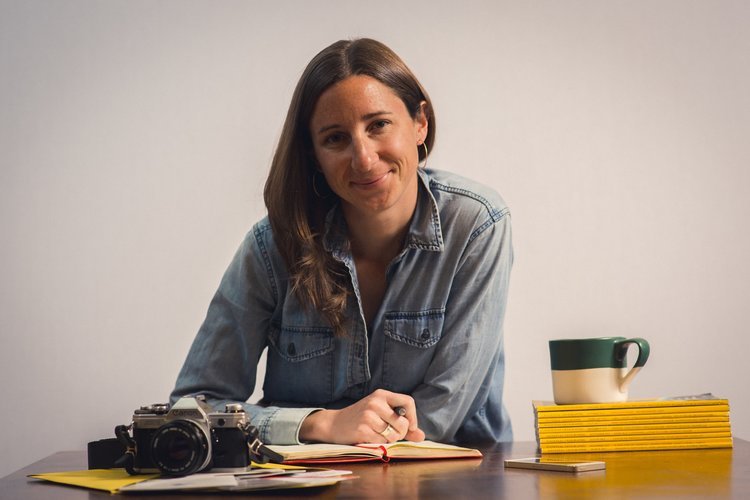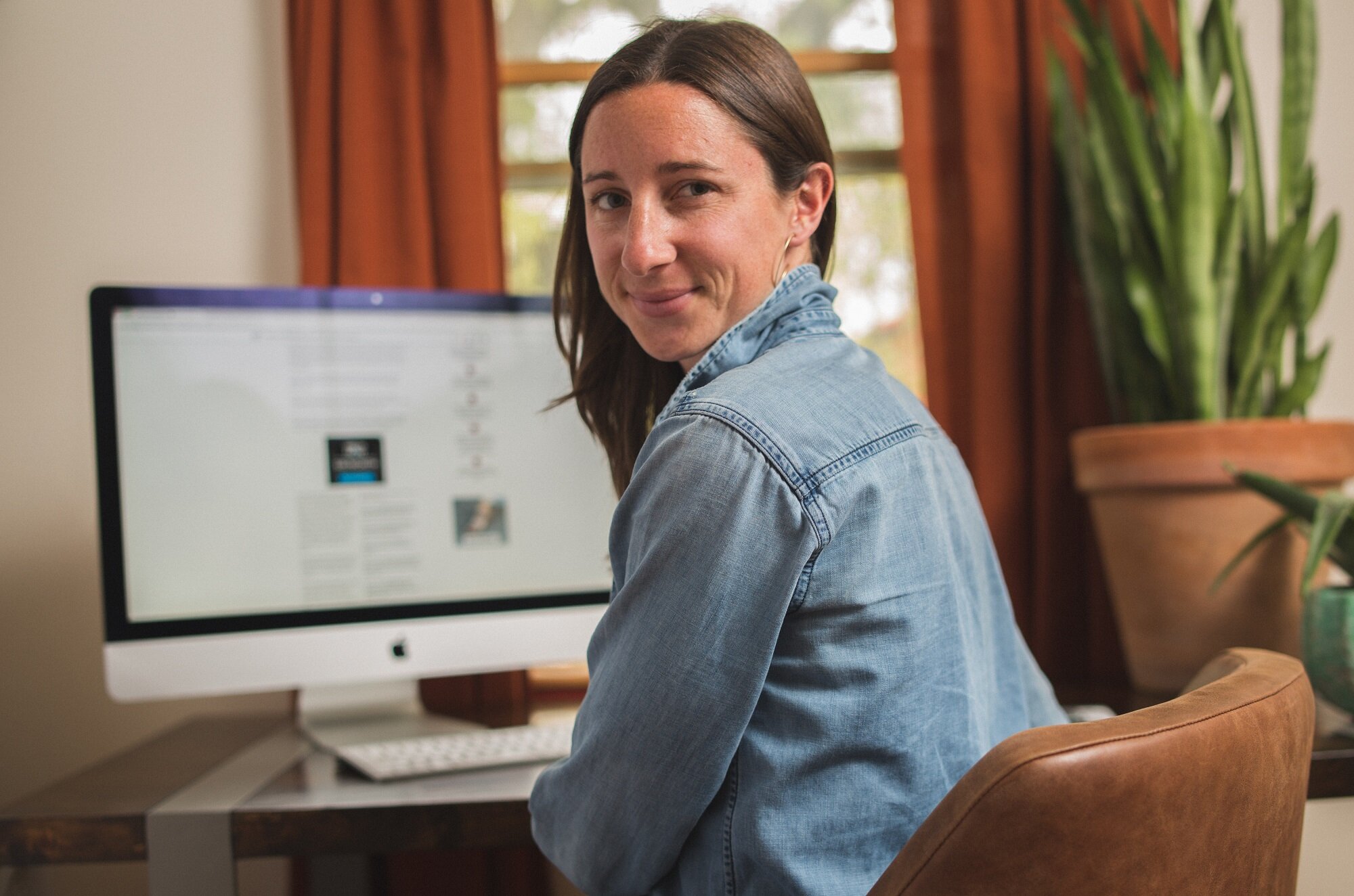
Telling Stories Of Social Change: Interview With Kassia Binkowski, Founder & Creative Director of One Thousand Design
Meet Kassia Binkowski, Founder & Creative Director of One Thousand Design
At The Good Trade, we are incredibly proud of our strong, driven team of staff and contributors. Kassia Binkowski is an invaluable contributing member of our editorial team and an experienced storyteller. In addition to overseeing our industry leaders interview series on The Good Trade, she is also the Founder and Creative Director of One Thousand Design, a creative services studio dedicated to telling the stories behind socially-conscious brands.
A female entrepreneur and a storyteller for social good brands, Kassia has served as a personal and professional role model throughout the evolution of The Good Trade. I love learning new insights from her each time we speak and this conversation was no different. We discussed the most essential elements to successful storytelling, the common struggles social good enterprises face when sharing their message, and how her most recent journey – becoming a new mother – has woven into her career.
An invaluable contributing member of our editorial team at The Good Trade, what inspires your love of storytelling?
I’ve always been an introvert. I am the middle of six children and as chaos swirled around me I was always acutely aware of the various conversations and social dynamics that were playing out. I soaked it all in, one eye always open to watching the world unfold. I was also a sensitive kid. I had a thin skin, so for better or worse I felt everything intensely. I still do. Happy or sad, frustrated or funny – I can fill a room with my emotion (for better or worse). Over the years I’ve realized that sensitivity and awareness are rooted in a deep empathy for the experiences of those around me and it’s this empathy that has inspired my love of storytelling.
“It is in that sharing that I think we can find a sense of similarity and cultivate a collective human experience.”
With a burning curiosity for the stories and circumstances of everyone I cross paths with, I find great joy in deep conversations and have exactly zero tolerance for small talk. Over red wine or black coffee or wood fires or open roads, I love wrestling with hard questions and exploring the depths of one another’s realities. It is with great privilege then that I have had the opportunity to travel around the world, and the more countries and cultures I experience, the deeper obligation I feel to share those stories. It is in that sharing that I think we can find a sense of similarity and cultivate a collective human experience.
How did this inclination give way to passion and ultimately evolve into a career?
One thing that I’ve noticed about so many of the nonprofit and social enterprise leaders with whom I have had the privilege of working is that their careers are often an unpredictable blend of professional experience and personal passion. My story is no different.
After traveling around Eastern Africa during and after college I pursued a graduate degree in public health and spent several years in the nonprofit sector supporting global health programs around the world. Ultimately, the chance to move from Seattle, WA (global health mecca) to Boulder, CO (global health desert) where my husband and I were eager to settle forced me to get creative with my career. I took a lateral step and ended up working for a global education organization directing their communications and fundraising efforts. This is where I first experienced the synergy of my creative inclination and my professional interest in the social impact sector.
As Founder and Creative Director of One Thousand Design, a creative studio telling stories of social change, you have a behind-the-scenes peek at the growing social impact industry. What do you project for the future of the industry?
The social impact industry is evolving so quickly. What used to be comprised primarily of nonprofit organizations, the sector is now shared with for-profit social enterprises and benefit-corporations. We couldn’t be more excited to see the playing field flung wide open. With the diversification of the industry, for-profit organizations are being challenged to embed social and environmental values into their DNA while non-profit organizations are investing in more marketing and raising their standards of professionalism.
“For-profit organizations are being challenged to embed social and environmental values into their DNA, while non-profit organizations are investing in marketing and raising their standards of professionalism.”
One of the other trends we’re witnessing is how these values are translated to the organization’s target market – consumers, donors, investors, etc. Navigating a flurry of fair trade, organic, non-GMO, and local certifications among so many others, now more than ever individuals are being drawn to support organizations with truly tangible impacts. The accessories made by a woman who survived the sex trade, the shoes that employ thousands of low-income individuals, the small batch chutneys made from salvaged produce – these are the businesses that we believe have a unique advantage to engage the conscious consumer. A businesses’ ability to communicate this impact, to differentiate itself based on the depth of its mission rather than banking on the weight of a certification – that all comes back to storytelling.
Working alongside grassroots community organizations and robust international enterprises alike, what are the common struggles social good companies face when trying to tell their story?
The biggest struggle that I’ve seen is the ability of the organization’s leadership to articulate their passion in a meaningful way to their target audience. The founder and staff have witnessed the impact of their work firsthand, they have sipped tea with the artisans, walked through the markets, visited the worksites. They have memorized the curve of the road, the callus of the hands, the spark in the eyes of the people they are employing. Working in this sector requires a level of grace and grit and these leaders live and breathe the values that they have woven into their businesses.
“The biggest struggle that I’ve seen is the ability of the organization’s leadership to articulate their passion in a meaningful way to their target audience.”
Translating that passion to a donor or consumer presents an enormous challenge. You have to bridge a gap between cultures and often across countries. You have to tailor the messages to different markets. You have to put words and products to the passion that you long ago accepted as being the only way for you to live. You have to help a new audience make that same choice again and again and again. That’s no easy feat.
What makes a compelling story? How can social impact organizations effectively communicate their vision and inspire action?
Research shows that a good story taps into the way our brains are hard-wired to process information. They can build empathy, captivate imaginations, and influence our behavior. There are so many different formulas out there, but I believe that most good stories have three things in common: strong structure, compelling content, persuasive passion. The way in which you tell a story impacts the reception thereof – identifying a conflict and a resolution is the easiest place to start. But it’s not enough to have a strong shape, you need to have powerful content to work with in the first place – engage your audience with crisp details, evocative imagery, and compelling context.
“I believe that most good stories have three things in common:
strong structure,
compelling content,
persuasive passion.”
The final element is that the story is told with personal conviction. The passion you have for the subject area, the compassion you have for the subject – this is an intangible ingredient that has a very tangible impact on how your story will be told and received.
A writer, storyteller, designer, business owner and now a new mother – are there any words of wisdom for women who have yet to embark on the journey of motherhood? Has having a family enriched your work with social good?
Oh my, where to start. Motherhood has changed everything for me and nothing, all at the same time. When I stepped out of the nonprofit sector three years ago I knew I wanted to build a business. I have always been career driven. But more than any passion I’ve felt for my professional pursuits, I’ve known in the very depths of my being that I needed to be a mother. Now, with an infant on my hip and a full inbox staring back at me, I’ve found my plate full with both of those roles simultaneously. It’s finally time to take real ownership of these two desires and weave them into one life.
And it’s hard.
“We’re all leaning on one another, surrounding ourselves with great people, doing our very best, and creating our own definition of success. So find your tribe, pull them close, be patient with yourself, and lean into the adventure.”
I’ve learned very quickly that any illusion of balance must be measured not in hours or days but in weeks or months. My definition of productivity has shifted dramatically, business growth might slow down this season, but my days are so much more full. My talented team means more to me now than ever before. I can say that being a mother has opened my eyes to a level of empathy and compassion that I didn’t know I was capable of. That directly impacts my commitment to creating social change and continuing to chase down new opportunities for our studio.
Like entrepreneurship, in motherhood I’ve realized that none of us knows quite what we’re doing and that’s ok. We’re all leaning on one another, surrounding ourselves with great people, doing our very best, and creating our own definition of success. So find your tribe, pull them close, be patient with yourself, and lean into the adventure.



